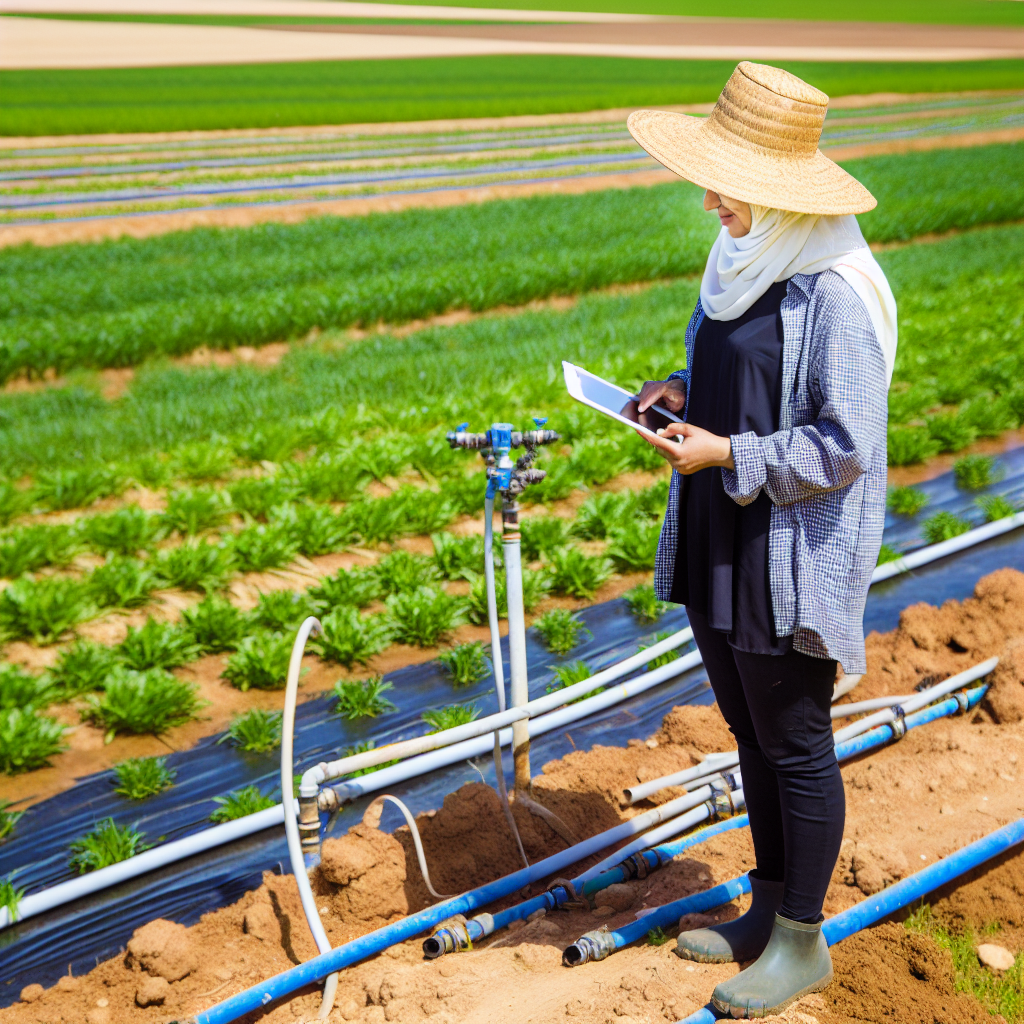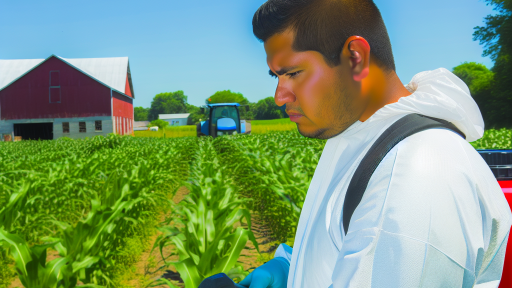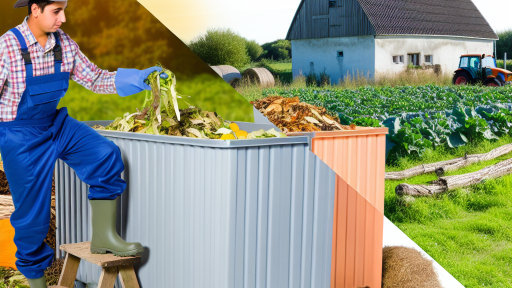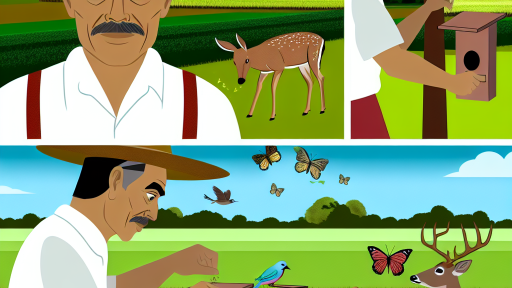Introduction to Water-Saving Technologies in Agriculture
Water scarcity poses a significant challenge for global agriculture.
Innovative water-saving technologies emerge as critical solutions.
These technologies enhance efficiency and sustainability in farming practices.
Importance of Water Conservation
Water conservation plays a vital role in sustainable agriculture.
Farmers face increasing pressure due to climate change effects.
Additionally, growing populations demand more food from limited resources.
Therefore, innovative solutions are essential for long-term viability.
Types of Water-Saving Technologies
Farmers utilize various water-saving technologies today.
- Drip irrigation systems minimize water loss during farming.
- Soil moisture sensors optimize irrigation schedules effectively.
- Rainwater harvesting captures and stores precipitation.
- Smart valves and controllers ensure water distribution efficiency.
Benefits of Implementing These Technologies
Implementing water-saving technologies delivers multiple benefits.
Firstly, it increases crop yields while using less water.
Secondly, these practices reduce operational costs significantly.
Moreover, they lower the environmental impact of farming operations.
Lastly, farmers become more resilient to variable climate conditions.
The Importance of Water Conservation in Sustainable Farming
Understanding the Significance of Water
Water is a vital resource for agricultural success.
It directly impacts crop yields and overall farm productivity.
Transform Your Agribusiness
Unlock your farm's potential with expert advice tailored to your needs. Get actionable steps that drive real results.
Get StartedAdditionally, water conservation helps maintain healthy ecosystems.
As climate change progresses, water scarcity becomes a looming threat.
Farmers must adopt sustainable practices to mitigate these challenges.
Economic Benefits of Water Conservation
Reducing water usage cuts costs for farmers.
Less water means lower energy costs for irrigation systems.
Moreover, efficient water management enhances crop resilience.
This resilience can lead to more stable income over time.
Successful water conservation practices contribute to long-term viability.
Environmental Impact
Water conservation techniques bolster biodiversity in farming areas.
They reduce runoff, which protects local waterways from pollution.
Moreover, conserving water helps maintain soil health and fertility.
This, in turn, supports a diverse range of plants and animals.
Healthy ecosystems contribute to improved agricultural sustainability.
Innovative Water-Saving Technologies
Farmers can implement various technologies to conserve water.
Drip irrigation systems deliver water directly to plant roots.
This method minimizes evaporation and runoff significantly.
Soil moisture sensors help monitor soil conditions effectively.
Farmers can adjust irrigation schedules based on real-time data.
Community and Policy Implications
Local communities benefit when farmers conserve water.
Water-saving practices promote shared water resources for all users.
Moreover, supportive policies can enhance these conservation efforts.
Governments can provide incentives for adopting efficient technologies.
Collaboration among stakeholders fosters collective sustainability goals.
Overview of Innovative Irrigation Techniques
Drip Irrigation
Drip irrigation delivers water directly to the plant roots.
Showcase Your Farming Business
Publish your professional farming services profile on our blog for a one-time fee of $200 and reach a dedicated audience of farmers and agribusiness owners.
Publish Your ProfileThis technique minimizes evaporation and runoff.
Farmers can save up to 50 percent more water compared to traditional methods.
Additionally, it reduces weed growth by limiting water to non-crop areas.
Smart Irrigation Systems
Smart irrigation systems utilize sensors to monitor soil moisture levels.
These systems adjust water application based on real-time data.
As a result, they optimize water usage and enhance crop health.
Farmers can remotely manage their irrigation through mobile applications.
Rainwater Harvesting
Rainwater harvesting captures and stores rainwater for irrigation.
This practice reduces dependence on groundwater sources.
It provides a sustainable water supply during dry seasons.
Farmers can improve their resilience against climate variability.
Subsurface Irrigation
Subsurface irrigation involves placing irrigation pipes underground.
This method reduces evaporation and conserves water efficiently.
It promotes deep root growth for healthier plants.
Moreover, it can improve nutrient uptake by crops.
Water Recycling Techniques
Water recycling involves treating and reusing wastewater for irrigation.
This approach decreases the demand on freshwater resources.
Farmers can implement this technique in areas facing water shortages.
Additionally, it helps reduce environmental pollution from runoff.
Discover More: Crop Rotation Planning Methods For Sustainable Agriculture
Role of Drip Irrigation in Efficient Water Use
Understanding Drip Irrigation
Drip irrigation delivers water directly to plant roots.
This method minimizes evaporation and runoff.
Farmers install a network of tubing and emitters.
Unlike traditional methods, this system conserves water effectively.
Benefits of Drip Irrigation
Drip irrigation enhances water efficiency in agriculture.
It reduces water usage by up to 50% compared to conventional methods.
This technology promotes healthier plant growth and yields.
Furthermore, it decreases the likelihood of soil erosion.
Environmental Impact
This technique supports sustainable farming practices.
By reducing water waste, drip irrigation protects local ecosystems.
Consequently, nearby water sources maintain their viability.
Moreover, it limits the need for chemical fertilizers.
Adoption Challenges
Some farmers face challenges when adopting drip irrigation.
The initial installation can be costly and complex.
However, significant long-term savings can offset these costs.
Additionally, training and education are vital for effective use.
Future of Drip Irrigation
Innovations continue to improve drip irrigation systems.
Smart technology integrates sensors for optimal water use.
This advancement allows real-time monitoring and adjustments.
As a result, farmers can maximize efficiency with less effort.
Showcase Your Farming Business
Publish your professional farming services profile on our blog for a one-time fee of $200 and reach a dedicated audience of farmers and agribusiness owners.
Publish Your ProfileSee Related Content: Sustainable Livestock Housing Design Principles And Tips
Advancements in Rainwater Harvesting Systems
Overview of Rainwater Harvesting
Rainwater harvesting captures and stores rainwater for agricultural use.
This technique reduces dependency on traditional water sources.
Farmers can utilize these systems to enhance sustainability.
Modern Technologies in Rainwater Harvesting
Innovations have greatly improved rainwater harvesting efficiency.
Some systems now include advanced filtration and storage solutions.
Technologies also provide better monitoring of water quality.
Benefits of Enhanced Rainwater Collection
Rainwater harvesting offers numerous advantages for agriculture.
- It reduces soil erosion and enhances soil moisture retention.
- This practice helps mitigate flooding during heavy rains.
- Farmers can optimize irrigation schedules based on collected rainfall.
Case Studies and Success Stories
Farmers worldwide implement successful rainwater harvesting systems.
For instance, Maria Lopez in Mexico effectively uses rain barrels.
Her methods have significantly increased crop yield during dry seasons.
Future Prospects and Ongoing Developments
The future of rainwater harvesting looks promising with ongoing advancements.
Researchers actively explore new methods to enhance efficiency.
Investments in this technology can boost agricultural resilience.
Gain More Insights: Conserving Biodiversity in Agricultural Landscapes
Integration of Soil Moisture Sensors for Precision Irrigation
Importance of Soil Moisture Sensors
Soyl moisture sensors play a crucial role in sustainable agriculture.
They help farmers monitor soil hydration levels accurately.
This technology reduces water waste significantly.
Consequently, crops receive the right amount of water.
Types of Soil Moisture Sensors
There are several types of soil moisture sensors available today.
Capacitive sensors measure changes in electrical capacitance.
These sensors provide quick and reliable readings.
Resistance sensors assess the electrical resistance in soil.
They are typically less expensive but may require more maintenance.
Farmers Implementing Soil Moisture Sensors
Farmers around the globe adopt these sensors for various crops.
For instance, Martinez Farms uses capacitive sensors in their vineyards.
They effectively maintain optimal moisture levels during dry spells.
Another example is Green Valley Ranch, which employs resistance sensors.
They benefit from improved irrigation scheduling and reduced costs.
Benefits of Precision Irrigation
Precision irrigation leads to several advantages for farmers.
It enhances crop yield by providing optimal growing conditions.
Moreover, it conserves water resources and reduces costs.
Additionally, it minimizes soil erosion and nutrient runoff.
Farmers can therefore meet environmental and productivity goals simultaneously.
Future of Soil Moisture Sensors
The future looks promising for soil moisture sensor technology.
Advancements in sensor accuracy and affordability are on the horizon.
Moreover, integration with smart farming systems is becoming common.
This technology will continue to evolve alongside precision agriculture initiatives.
Farmers can thus expect higher efficiency in their operations.
Discover More: Creating Habitats to Support Farm Biodiversity
Showcase Your Farming Business
Publish your professional farming services profile on our blog for a one-time fee of $200 and reach a dedicated audience of farmers and agribusiness owners.
Publish Your Profile
Impact of Water-Saving Technologies on Crop Yield and Soil Health
Enhancing Crop Yield
Water-saving technologies significantly boost crop yield.
They optimize irrigation practices to deliver precise amounts of water.
Moreover, techniques like drip irrigation reduce water waste.
This conserves water while ensuring plants receive adequate moisture.
As a result, farmers report healthier and more productive crops.
Studies indicate that yields can increase by up to 30% with effective water management.
Improving Soil Health
These technologies also positively impact soil health.
Conserving water helps maintain optimal soil moisture levels.
This supports microbial activity essential for nutrient cycling.
Furthermore, reduced soil erosion occurs when water is used efficiently.
As a result, the organic matter in the soil remains intact.
This leads to improved soil structure and fertility over time.
Integrating Technologies for Maximum Benefits
Combining various water-saving technologies brings additional advantages.
For instance, pairing drip irrigation with soil moisture sensors enhances efficiency.
These sensors notify farmers when irrigation is necessary.
Consequently, water consumption decreases while crop health improves.
Farmers adopting these integrated approaches benefit financially as well.
They save money on water costs while increasing their yields.
Case Studies of Successful Implementation
Several farmers have successfully adopted water-saving technologies.
For example, Manuela Torres transformed her farm using these methods.
She implemented precision irrigation and observed a 25% yield increase.
Moreover, her soil health improved significantly within two years.
Another success story comes from GreenField Farms.
They adopted rainwater harvesting systems and reduced water costs dramatically.
This approach not only supported crop health but also enhanced local biodiversity.
Future Prospects in Sustainable Agriculture
As climate change progresses, water-saving technologies remain vital.
They prepare farms for increasing drought conditions and water scarcity.
Investing in research will further improve these technologies.
This investment enhances adaptability for future farming challenges.
Ultimately, embracing these technologies leads to sustainability in agriculture.
Case Studies of Successful Implementation in Various Regions
Drip Irrigation in California
California farmers have adopted advanced drip irrigation techniques.
This method delivers water directly to plant roots.
As a result, it reduces water waste significantly.
Farmers report increases in crop yield and quality.
Moreover, this practice has improved water conservation efforts.
Rainwater Harvesting in India
In India, farmers embrace rainwater harvesting systems.
These systems collect and store rainwater for irrigation.
Consequently, they decrease reliance on groundwater sources.
Farmers in Rajasthan have documented remarkable improvements.
Water availability has increased during dry seasons.
Showcase Your Farming Business
Publish your professional farming services profile on our blog for a one-time fee of $200 and reach a dedicated audience of farmers and agribusiness owners.
Publish Your ProfileSoil Moisture Sensors in Australia
Australian farmers utilize soil moisture sensors effectively.
These sensors monitor soil conditions in real-time.
Thanks to this technology, irrigation is now more efficient.
Farmers report reduced water usage without sacrificing production.
Additionally, they can tailor water application to specific crop needs.
Fog Nets in Chile
Farmers in Chile have pioneered the use of fog nets.
These nets capture water droplets from fog efficiently.
In arid regions, this method provides a vital water source.
Thus, farms in the Atacama Desert experience enhanced productivity.
This innovative approach also aids in ecosystem restoration efforts.
Precision Agriculture in Canada
Canadian farmers implement precision agriculture technologies.
These tools analyze field data for efficient water use.
Farmers achieve optimal irrigation schedules based on data.
Consequently, they enjoy improved crop health and lower costs.
This efficiency enhances the sustainability of farming practices.
Challenges and Limitations of Adopting Water-Saving Technologies
Economic Barriers
Cost can be a major hurdle for farmers adopting new technologies.
Initial investments may discourage some from making necessary changes.
Moreover, technology maintenance can incur additional expenses.
Consequently, some farmers may choose to stick with traditional methods.
Knowledge and Training Gaps
A lack of knowledge can hinder the adoption of water-saving technologies.
Farmers may not fully understand how to implement these systems effectively.
Furthermore, training resources might be limited in certain areas.
This gap results in inefficient usage of available technologies.
Infrastructure Limitations
In many regions, water-saving infrastructures are inadequate.
Outdated systems may not support modern irrigation techniques.
Additionally, access to necessary materials can prove challenging.
Consequently, farmers often hesitate to invest in advanced technologies.
Cultural Resistance
Some farming communities may resist changing their traditional practices.
They might view new technologies as unnecessary or complicated.
This cultural inertia can slow the implementation of sustainable solutions.
Thus, promoting education and outreach is essential.
Environmental Considerations
Not all water-saving technologies suit every environmental condition.
Different crops or soil types may require tailored approaches.
In some instances, improper use may lead to negative environmental impacts.
Consequently, proper evaluations are crucial before implementation.
Policy and Regulatory Challenges
Government policies can either support or impede technology adoption.
Inconsistent regulations may create uncertainty for farmers.
Additionally, insufficient incentives can leave farmers disillusioned.
Thus, stronger support and clarity in policies are necessary.
Future Trends in Water Conservation and Sustainable Agriculture
Emerging Technologies
New technologies are transforming water conservation in agriculture.
Showcase Your Farming Business
Publish your professional farming services profile on our blog for a one-time fee of $200 and reach a dedicated audience of farmers and agribusiness owners.
Publish Your ProfileInnovative irrigation systems improve efficiency and reduce waste.
For instance, drip irrigation delivers water directly to plant roots.
This method minimizes evaporation and runoff significantly.
Furthermore, soil moisture sensors enable farmers to monitor conditions accurately.
These sensors help optimize irrigation schedules based on real-time data.
Integration of AI and Automation
Artificial intelligence is increasingly used in agriculture.
AI algorithms predict water needs based on weather patterns.
This predictive capability allows for proactive water management.
Additionally, autonomous systems can operate irrigation equipment efficiently.
As a result, farmers save both time and water resources.
Precision Agriculture Practices
Precision agriculture focuses on precise water usage.
Farmers employ GPS technology to apply water only where needed.
This targeted approach reduces excess water application.
Moreover, data analytics provide insights on field variations.
These insights guide tailored irrigation strategies for better outcomes.
Water Recycling Innovations
Water recycling technologies are gaining traction in agriculture.
Farmers are harnessing treated wastewater for irrigation.
This practice conserves freshwater resources sustainably.
Furthermore, it contributes to nutrient recycling in the soil.
Implementing such systems enhances resilience against water shortages.
Collaboration and Policy Development
Collaboration among stakeholders is crucial for effective water management.
Governments, NGOs, and farmers must work together.
They can create policies that encourage sustainable practices.
Additionally, educational programs raise awareness about water conservation.
Such collective efforts foster a culture of sustainability in agriculture.
Additional Resources
Biden-Harris Administration Invests Up to $400 Million to Address …




